Soaring on the Wings of Giants—35 Years of the Taiwan Wild Bird Federation (Part 4)
By Scott Pursner, TWBF Director of International Affairs
Part 4: Today's Taiwan Wild Bird Federation and Current Actions (2015-The Present)
Start of the Modern Era (2015 to 2019)
In 2015, a number of events occurred that helped usher in the current status of the TWBF and the work it does. For instance, the Chiehting Ecological and Cultural Association and Meinung People's Association, both in Kaohsiung, joined the federation, bringing the group to its current 21 partners. Another notable change came in the form of the launch of the eBird Taiwan portal.
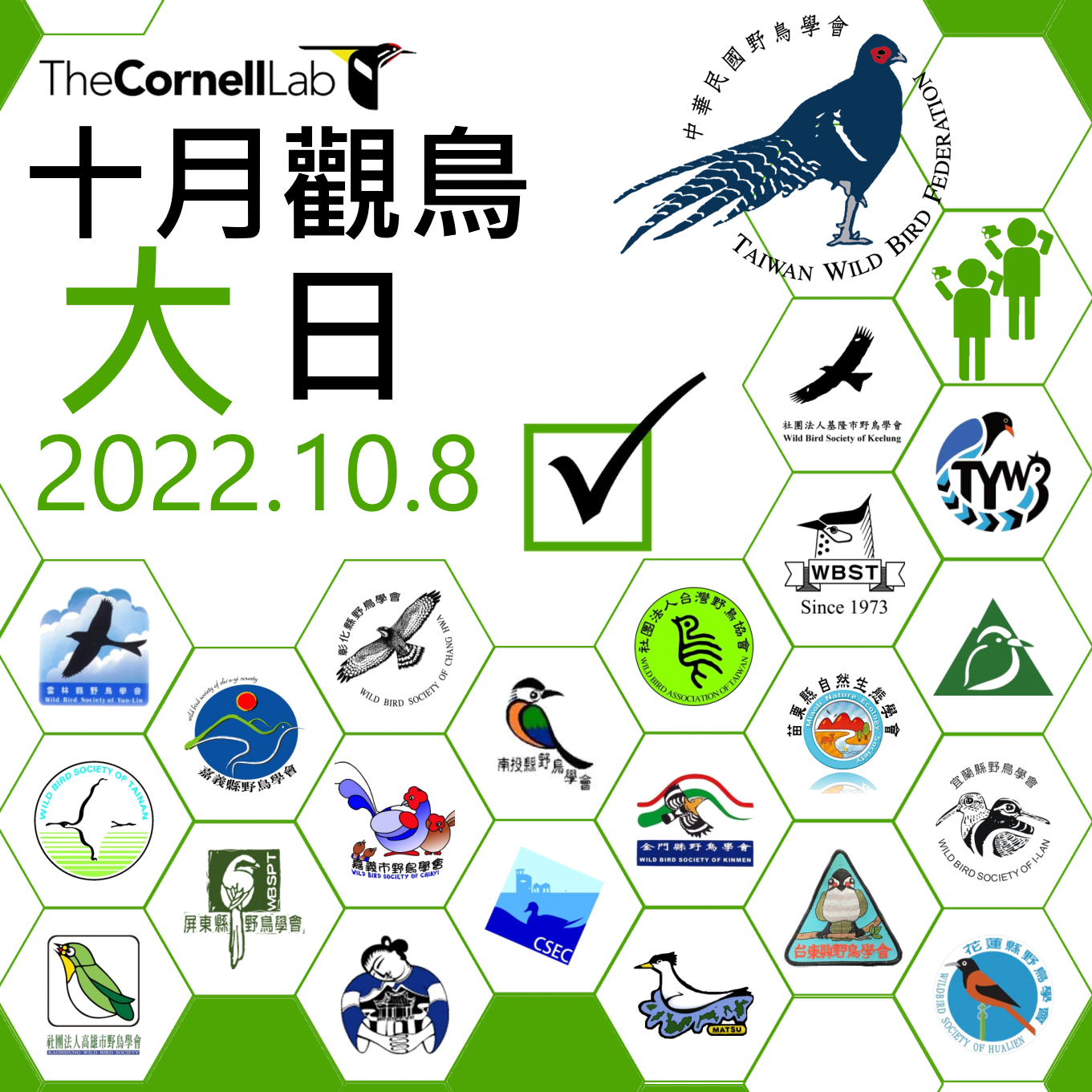
This promotion for the October Big Day in 2022 shows the logos of the TWBF and its 21 partners (Source: TWBF Archives)
Launched in 2002, eBird is a real-time, online platform initially developed by the Cornell Lab of Ornithology at Cornell University and the Audubon Society which allows users to upload their birdwatching checklists and keep records of their sightings and places visited. Checklists can be made private or can be shared with other eBird users worldwide. Initially, Dr. Lin Ruey-shing of TBRI discussed collaborating on the launch of an eBird portal for Taiwanese birders with then TWBF president Tsai Shi-peng. Both felt citizen science should come from the people, not the government. Also, the TWBF already managed the Taiwan Bird Records Database. The two groups agreed to work together on the project and the eBird Taiwan portal officially launched in August that year.
Lyu explained that, since most birders in Taiwan already used the Taiwan Bird Record Database to record their checklists, it took time for it to catch on. The format of eBird is attractive though, as it provides users with the ability to view historical checklists and even has analysis capabilities. This eventually helped streamline Taiwan's data so it could be more easily analyzed. Lyu also said that a project was initiated in 2018 where Dr. Ding Tsung-su of National Taiwan University, his lab, and a team of volunteers worked to shift all data from inside Taiwan's Bird Record Database to eBird itself from the earliest which date back to the 1970s until 2017 (11). All were successfully uploaded by summer 2022.
Lyu feels that the importance of eBird can't be understated. He said, "If you look at Taiwan's eBird checklists, we have over one million now. The bird record database only had around 100,000+, so since 2015, there's been this explosion of checklists and users. It's because contributing became so much easier. This meant Taiwan's citizen science didn't need to rely on BBS and NYBC alone. eBird enabled individuals and groups that wanted to contribute to Taiwan's open biodiversity data to do so. It really opened up the world of birdwatching to Taiwanese people.”
Currently, Taiwan has over 7,200 eBirders and 1,000,000+ uploaded checklists, making it 7th in the world for checklists overall (5).
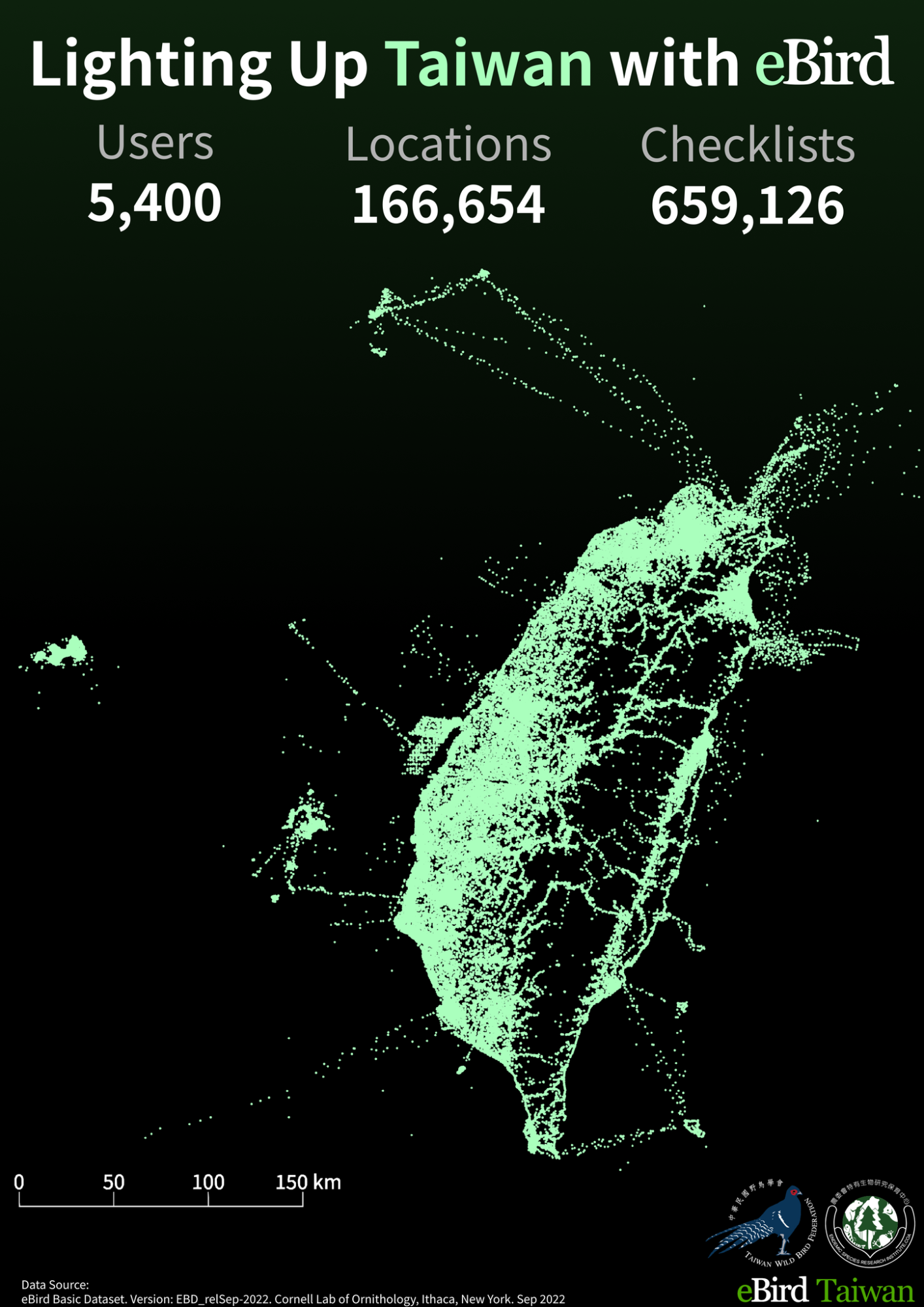
This map of Taiwan from Sepember 2022 was created using locations where checklists were logged using eBird (Source: TWBF Archives)
In 2021 Lyu and Chiu Chen-ching of TBRI created a procedural manual in Mandarin for eBird users.
The Taiwan NYBC went on to use eBird as one of the major means of recording during this citizen science project. In time, most if not all of Taiwan's citizen science projects for birds were using eBird in some capacity.
Two other major activities took place in 2015. The first was the publication of the 2nd edition of Important Bird Areas in Taiwan. By this time, Taiwan had 53 recognized IBAs. The second was the launch of another citizen science project, the Jacana Survey Tainan. Organized by the Pheasant-tailed Jacana Conservation Park and done in collaboration with TBRI and with the support of TWBF and partners, it aims to count the number of Pheasant-tailed Jacanas in the Guantian Area of Tainan City. The survey has shown that conservation efforts have been paying off and that in recent years over 1,000 Jacanas have been counted annually. In 2023, the number counted reached 2,882 (33).
In recognition of the TWBF's efforts over the years, it was awarded the Presidential Culture Award for Conservation in 2015 for its work in environmental protection and conservation (23). The award was presented by then President Ma Ying-jeou.
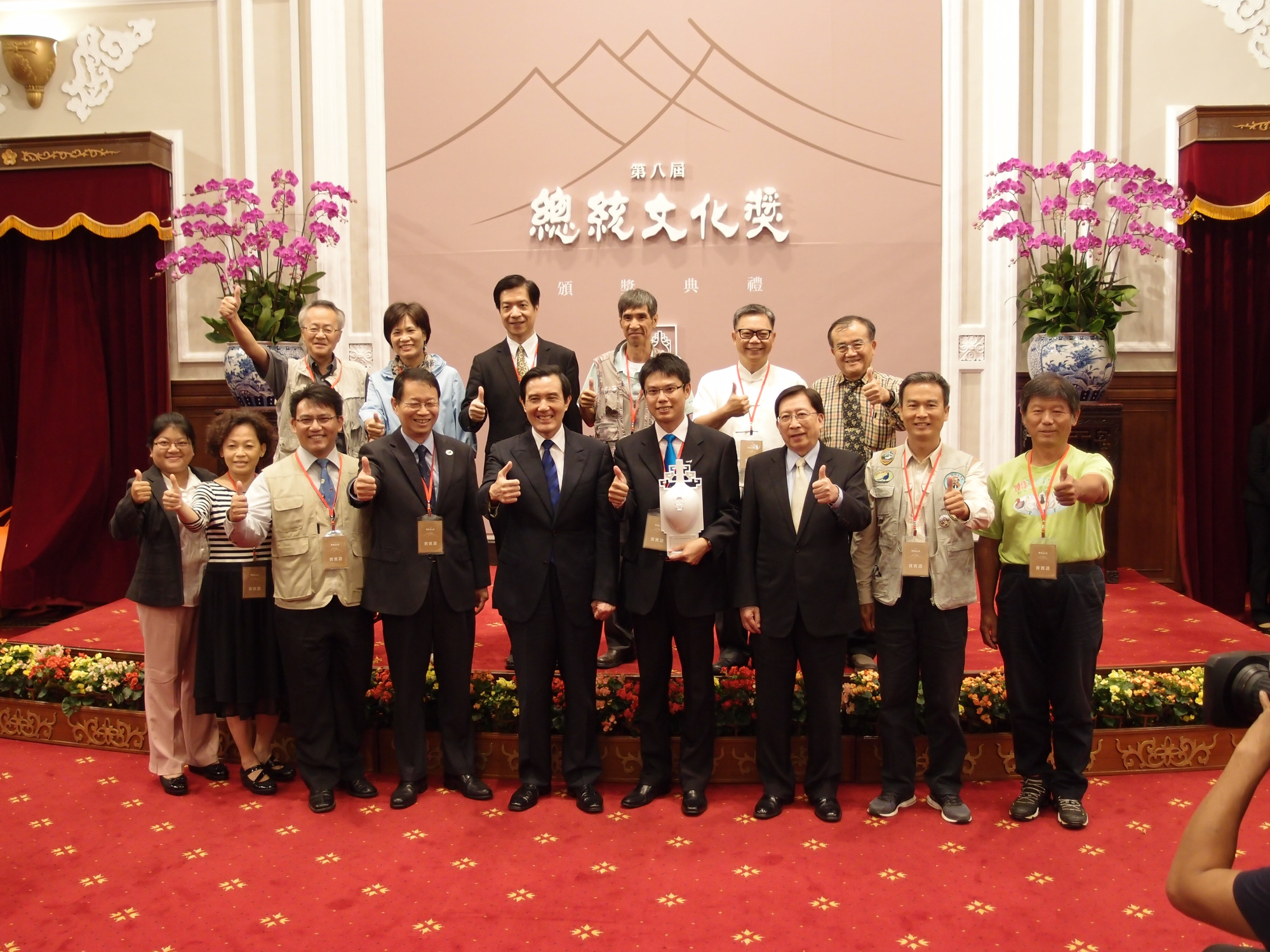
The TWBF recieved the Presidential Culture Award for Conservation in 2015 from Taiwan's then-president Ma Ying-jeou (Source: TWBF Archives)
In 2016, the TBRI and the Taiwan Forestry Bureau published the 2016 Red List of Birds of Taiwan. This was an update to the Red Book created in 2004 by Dr. Fang and the TWBF. It served to inform government policy for Taiwan's bird species (10). Also in 2016, the TWBF, in collaboration with the Royal Society for the Protection of Birds, and with the support of the Taiwan Fisheries Agency, sent two former Taiwanese fisheries observers, Tsai Ming-shan and Alton Liao, to conduct port-based outreach in Port. Louis, Mauritius. This work had been discussed as a means to progress related efforts after the 2013 Kaohsiung meeting on seabird bycatch and mitigation. They shared the newest information, and learned from the skippers and vessel owners about their thoughts on current bycatch mitigation measures. PBO activities were again held in 2018 with two other PBO officers, Orca Shen and Scott Pursner. They provided updates to vessel captains and discussed changes in seabird bycatch mitigation practices. The information gathered was important to understanding perspectives on seabird bycatch mitigation for Taiwanese vessels and the usage of the most common measures internationally: bird scaring lines, line weighting, and night setting.

Ms. Orca Shen talks with a Taiwanese fisher in Mauritius during the 2018 Port-Based Outreach (Source: TWBF Archives)
Using this as a backdrop, and after further research on bird scaring lines by the TWBF, an international workshop on the topic was hosted by the TWBF and RSPB with the support of the Taiwan Fisheries Agency in Kaohsiung (14). The 2019 Taiwan International Bird Scaring Line Workshop brought together experts from the UK, South Africa, Uruguay, Japan, and Taiwan, as well as representatives from government, industry, and academia to discuss one of the most commonly used mitigation measures for Taiwanese vessels. International experts discussed the BSL, which schematically is a rope with streamers released off the back of the vessel while the bait is being set to deter birds from taking the bait and possibly getting hooked. They also learned from Taiwanese fishers about what they found to be effective materials for BSLs on Taiwanese vessels. It was agreed that more collaboration should be done toward finding solutions to the problem of global seabird bycatch.
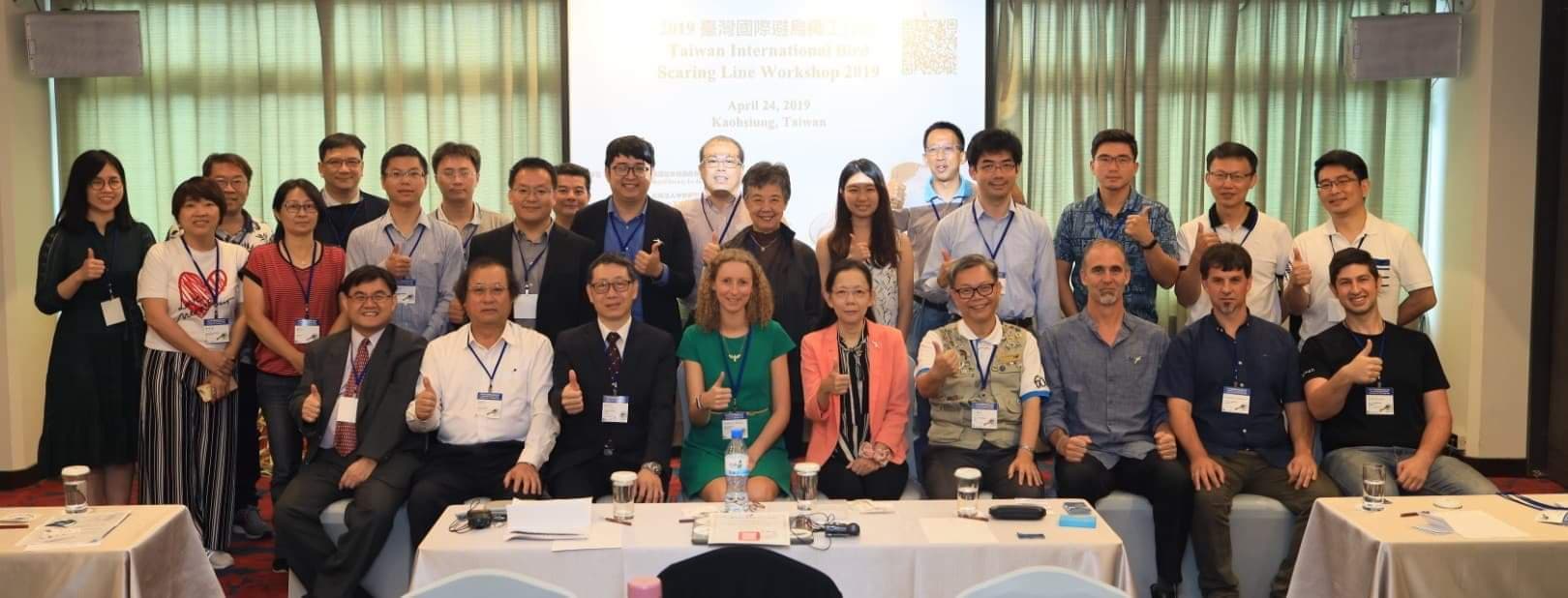
Group Photo from the 2019 Taiwan International Bird Scaring Line Workshop (Source: TWBF Archive)
Aside from citizen science projects and seabird bycatch work, the TWBF took part in a number of events abroad, including A Summit for Flyways in April 2018 (25). Held in Abu Dhabi, United Arab Emirates, the event brought together participants representing the world's major flyways to discuss the status and threats to these critical highways for migratory birds. Convened by BirdLife International in association with the Ornithological Society of the Middle East, the MAVA Foundation, the Convention on Migratory Species, and the Environment Agency-Abu Dhabi, the summit was hosted by the International Fund for Hubara Conservation.
In February 2019, the TWBF was invited by the Malaysia Nature Society to join its Environmental Education Network Workshop in both Kuala Selangor and Kuala Lumpur, Malaysia (26). The event came as a result of discussions between MNS and a number of BirdLife Asia partners on the need for more opportunities to communicate, share experiences, and find areas for collaboration. Its goals were to create an environment for networking and experience sharing. This was the first time such an event was held in Asia.
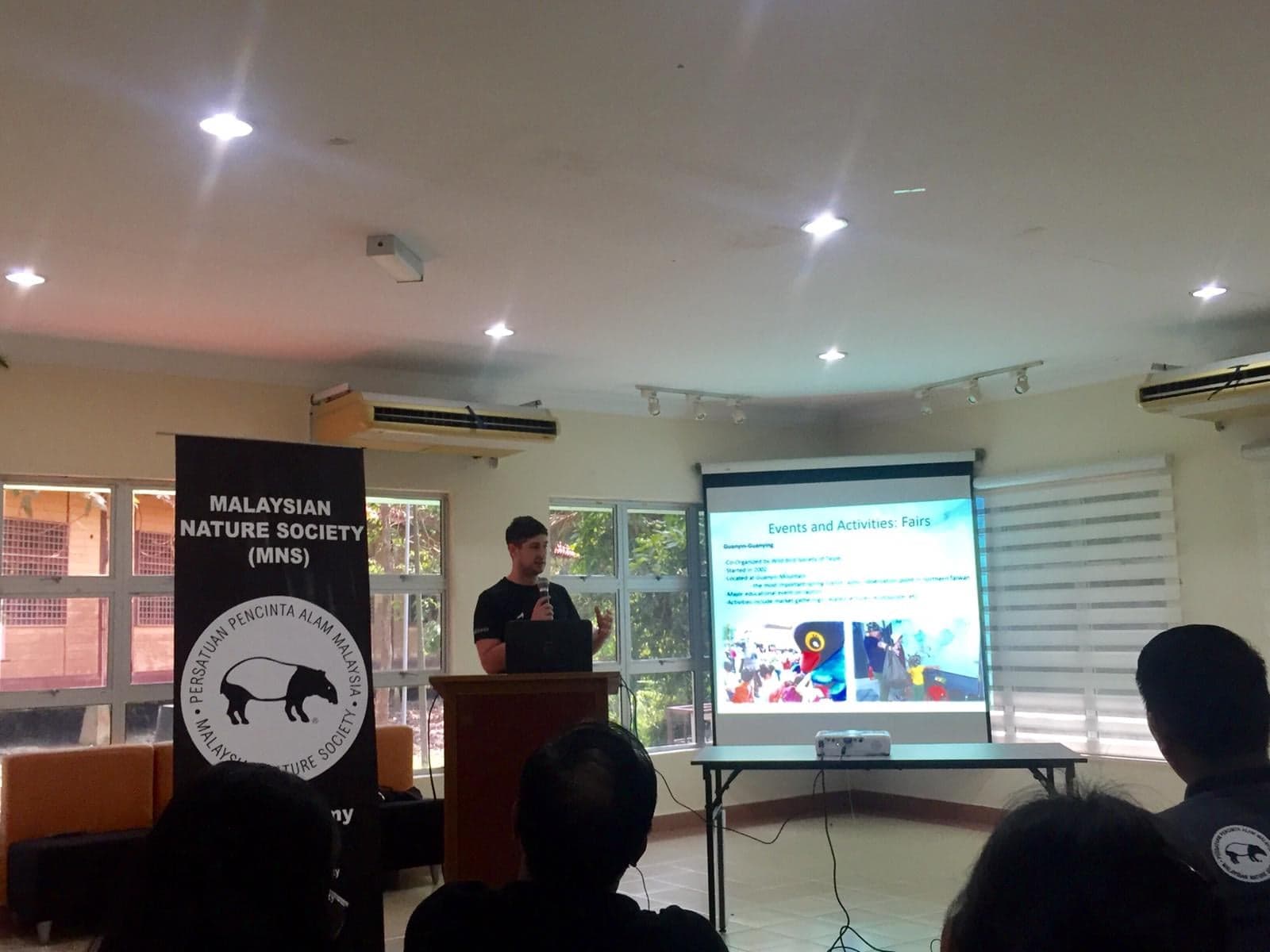
TWBF presents at the 2019 Environmental Education Network Workshop hosted by the Malaysia Nature Society (Source: TWBF Archive)
Another first, the 1st International Summit for Grey-faced Buzzards, took place in Utsunomiya, Japan in May 2019. The history of Grey-faced Buzzard conservation has connected Taiwan and Japan since the 1970s, and then-Secretary-General Adam Lee hailed from the Wild Bird Society of Changhua, a TWBF partner. Since the early 1990s, the group had held a celebration of the Grey-faced Buzzard's northern migration with their Free Buzzard at Mt. Bagua event. In March of that year, the TWBF helped their partner to invite international groups to take part in it. This included groups from Japan (Wild Bird Society of Japan), the Philippines (Raptorwatch Network Philippines, and Palau (the Palau Nature Society). Representatives of these groups, local bird societies and experts were able to help share their conservation stories and issues during a sharing session held during the event. Participants were able to learn from one another and make connections for the future (1).
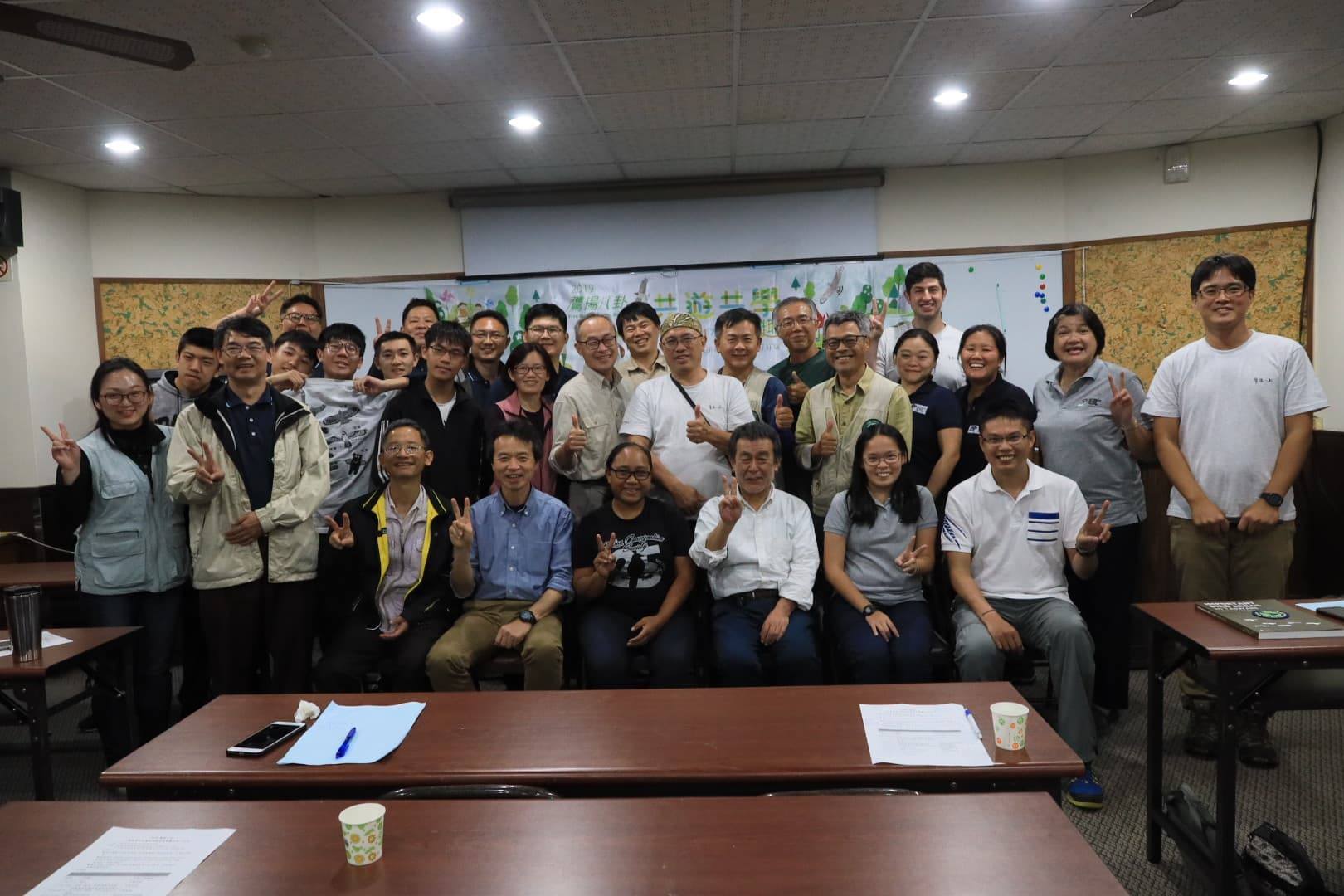
Group photo from the workshop held during the 2019 Free Buzzard in Mt. Bagua event (Source: TWBF Archives)
Also in 2019, the TWBF coordinated with the Bird Conservation Society of Thailand as they planned to host the first-ever Asian Birdlife Festival and Nature Expo in January 2020. Event goals included promoting nature education and awareness, sharing on conservation efforts by groups in Asia, fundraising for conservation projects, and creating networking opportunities for conservation groups in Thailand as well as throughout the BirdLife Asia partnership. TWBF Director of International Affairs Scott Pursner led a discussion session on the use of social media and social media strategies (15).
Meanwhile, a new potential threat to Taiwan's birds entered the conversation in 2017 – possible conflicts with green energy projects (30). With the global push for green energy and the newly elected Tsai Administration's push to make renewables 20% of Taiwan's energy grid by 2025, birds faced a new dilemma. Their habitats might be considered 'useless land' by the government and repurposed into solar panel farms. This spurred many policy conversations and action from the TWBF and its partners.
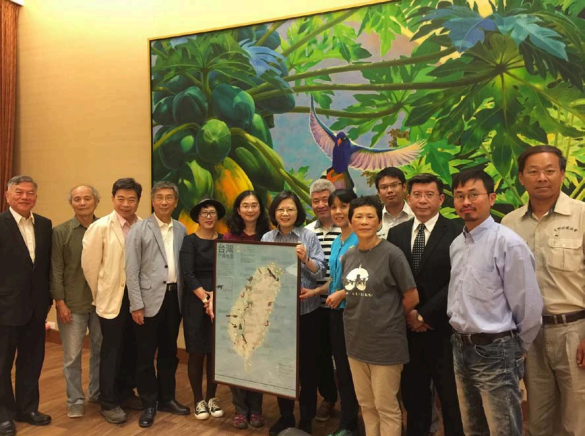
Then TWBF president Tsai Shih-peng (fourth from right) at a meeting with Taiwan president Tsai Ing-wen to discuss affects of photovoltaic projects on birds and particularly Budai Salt Pan Wetlands (Source Feather 281 (30)3: 30)
To protect vital habitats for birds from development, some TWBF partners moved to preserve the land by adopting it. The first to do so was the Kaohsiung Wild Bird Society. In 2019, they adopted 92 ha in the Budai Salt Pan Wetlands located in western Taiwan's Chiayi County. This area of former salt pans had been abandoned in 2002, and is now a major site for migratory birds, an IBA, and home to 40,000 wintering birds annually. This includes threatened species such as the Saunders's Gull and the Black-faced Spoonbill. Though unable to be classified as a RAMSAR or UNESCO site, it was named a nationally important wetland by the central government (31). The KWBS has a team dedicated to the work in Budai. They hold educational outreach events, conduct surveys, and engage with local stakeholders including energy companies while developing strategies for the future.
Also, in 2019, TWBF partner the Taoyuan Wild Bird Society opened Taiwan's first non-profit wildlife clinic. To date if has helped with the rescue and rehabilitation of thousands of animals, including birds, mammals, and reptiles (6).
Today's Taiwan Wild Bird Federation (2020 to present)
The year 2020 saw two events take place which would impact Taiwan's bird conservation work going into the future. The first was the decision by BirdLife International Global Council under the direction of its then-CEO to remove the TWBF from the partnership for reasons which are still opaque (4). This event cast a shadow on the fruitful partnership which existed between the organizations for over twenty years. However, the federation remains unwavering in its support for the BirdLife partners, the science behind BirdLife International, and the principles BirdLife has stood for in the past. It was after this, the organization then went through another English language name change, adopting the English language name of the Taiwan Wild Bird Federation. And as birds don't know borders, the TWBF also produced a statement that going forward, it would steadfastly remain a proud partner in conservation (24).
Later that same year, Taiwan published its first national bird report, the State of Taiwan's Birds 2020. This milestone in Taiwan's ornithological study was compiled by the TWBF and TBRI with guidance from the State of Taiwan's Birds Partnership. Government, academia, and civil society came together to create the first-of-its-kind report. During the TWBF's 30th anniversary in 2018, the organization held another Taiwan Bird Forum and Taiwan Migratory Bird Seminar. Abstracts from this seminal upcoming work were shared then (12). It served as the first comprehensive assessment of the conservation status of Taiwan's birds, integrating data collected through long-term citizen science projects and scientific studies. It also provides in-depth analysis of overall species population trends, the status of specific bird groups, current threats, and conservation strategies and actions (30). Citizen science played a critical role in its creation. About 89% of the data in the report was collected via Taiwan's people power.

Group photo from the Taiwan Bird Forum and Taiwan Migratory Bird Seminar (Source: Feather 289 (31)6: 10)
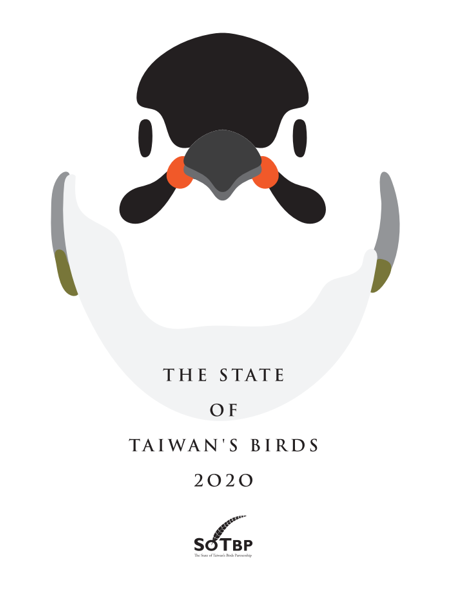
The State of Taiwan's Birds 2020 report (Source: TWBF Archives)
The year that followed was quite busy. The TWBF applied for membership in the International Partnership for the Satoyama Initiative on behalf of its partner, the Wild Bird Society of Tainan, which manages the Pheasant-tailed Jacana Conservation Park (13). The IPSI is an international certification given to organizations working on projects which aim to ensure the preservation of agricultural communities, traditional knowledge, and species conservation. The TWBF applied on behalf of the PTJCP, which had at this point been working with farmers on eco-friendly farming practices for over 20 years. The successes of these efforts include the number of jacanas in the area rising from less than 50 to nearly 3,000 now and working with farmers to implement eco-friendly farming practices. The application was ultimately successful.
Inspired by the success in neighboring Tainan, the Kaohsiung Wild Bird Society, with the help of members of the Meinong People's Association, worked to establish the Meinung Lake Jacana Conservation Area alongside Meinong Lake in Kaohsiung City. Though only a few hectares in area, the site is comprised of a wetland restoration site, an aquatic plant seedlings pond, and habitat workstation. Through the efforts of passionate volunteers, local farmers have been encouraged to create mixed vegetation ponds while growing their white-water snowflake crop to provide places for the jacanas to breed and to reinvigorate local biodiversity. The TWBF has supported these efforts and, in collaboration with their Kaohsiung partner, wrote an article later published in BirdingAsia, the official bulletin of the Oriental Bird Club, which highlights this work taking place in southern Taiwan (20). In 2023, the TWBF successfully submitted the Meinong case as another IPSI case study (27).
In terms of seabird bycatch mitigation, there was a major breakthrough. Based on discussions with the Taiwan Fisheries Agency, observers, and local tuna unions, two BSL trials for Taiwanese vessels commenced in 2021, one with small-scale vessels (>30m) and one with large-scale vessels (<30m) (21, 22). A comparison was made of two types of BSLs—one set up using international standards laid out by the Agreement on the Conservation of Albatross and Petrels (ACAP), and the other BSLs already employed by the Taiwanese vessels. On-board observers recorded the data to ensure that the experiments went smoothly and without error. The collected data were analyzed by Dr. Kuo Ting-chun of National Taiwan Ocean University. The data from the large-scale vessels, which conducted fishing operations in the Northern Pacific Ocean, were later turned into a Science Committee paper to be presented at a Regional Fisheries Management Organization meeting in August 2023.
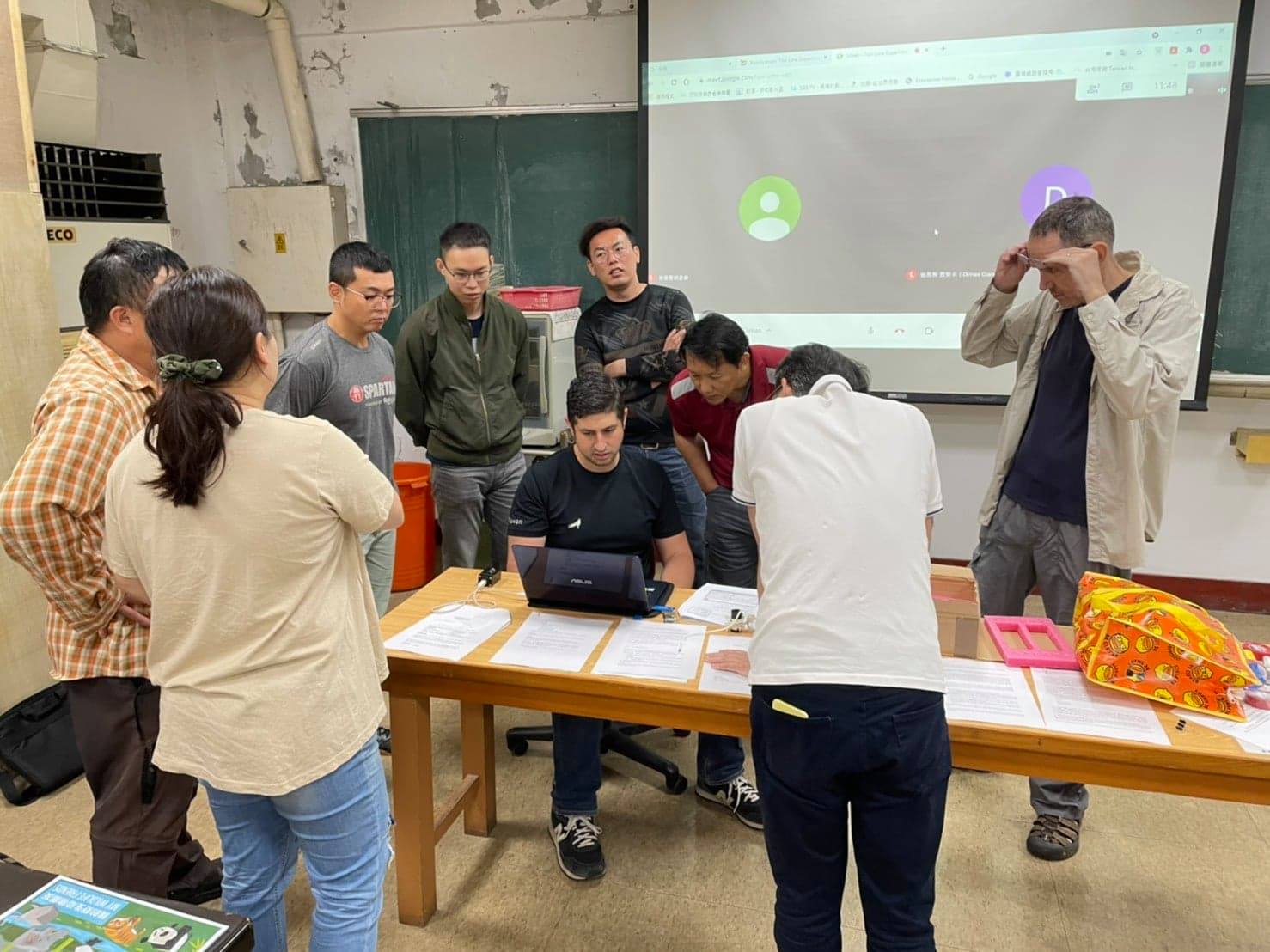
Training for Taiwanese observers taking part in 2021 BSL experiments (Source: TWBF Archives)
During this period, the TWBF and its partners also advocated for salt pan wetland conservation (29). At the end of 2020, the TWBF joined a campaign to halt solar panel development in former salt pans located at Jiangjun and Chiku Salt Pan Wetlands in Tainan City (7). Although maps showing ecological importance were created by the TBRI using survey data and information from checklists submitted to eBird, they had been overlooked. So, the federation and its partners coordinated in order to protest the projects, which were eventually halted (8). This campaign led to further conversations with like-minded NGOs, including their partner the Wild Bird Society of Tainan, the Taiwan Black-faced Spoonbill Conservation Association, Wetlands Taiwan, the Taiwan Environmental & Planning Association, and the Society of Wilderness. These talks transformed into what is now known as the Chiku and Jiangjun Salt Pan Wetlands Restoration Alliance. The group jointly applied to the central government to adopt 1,605 ha of salt pans from Taiwan's National Property Administration in April 2022. The TWBF has worked to help the group communicate with international friends and partners. The alliance is now in communication with the Bird Conservation Society of Thailand to learn about their land adoption work at Pak Thale, another salt pan wetland in the region which see many critically endangered Spoonbilled Sandpipers each winter. Taiwan saw one Spoonbilled Sandpiper in Tainan in January 2023, a female with leg band 88 (2). This was her third time in five years to come to the area, which is located inside of the area of adoption for the alliance. In January of 2023, alliance members helped conduct the Taiwan NYBC surveys in the area recently adopted, with over 20,000 birds counted (3). That same weekend, the 2023 Taiwan Black-faced Spoonbill Census took place nationwide, and recorded over 4,000 birds for the first time, a new record which accounts for 62% of the observed global population (28). Numbers for the endangered waterbird have gone up over time thanks to the groundwork laid out in the '90s, the declaration of the species as a CMS Appendix 1 species in the early 2000s, and the creation of a second action plan in 2015. Representing Taiwan then was Dr. Fang Woei-horng (16).
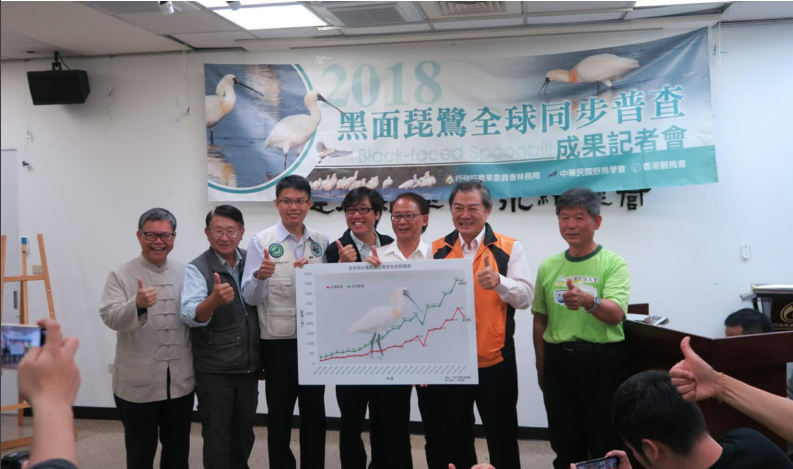
The TWBF invited Yu Yat Tung from the Hong Kong Bird Watching Society to speak at the press conference for the release of the 2018 Taiwan Black-faced Spoonbill Census results (Source: Feather 286 (31)2: 14)
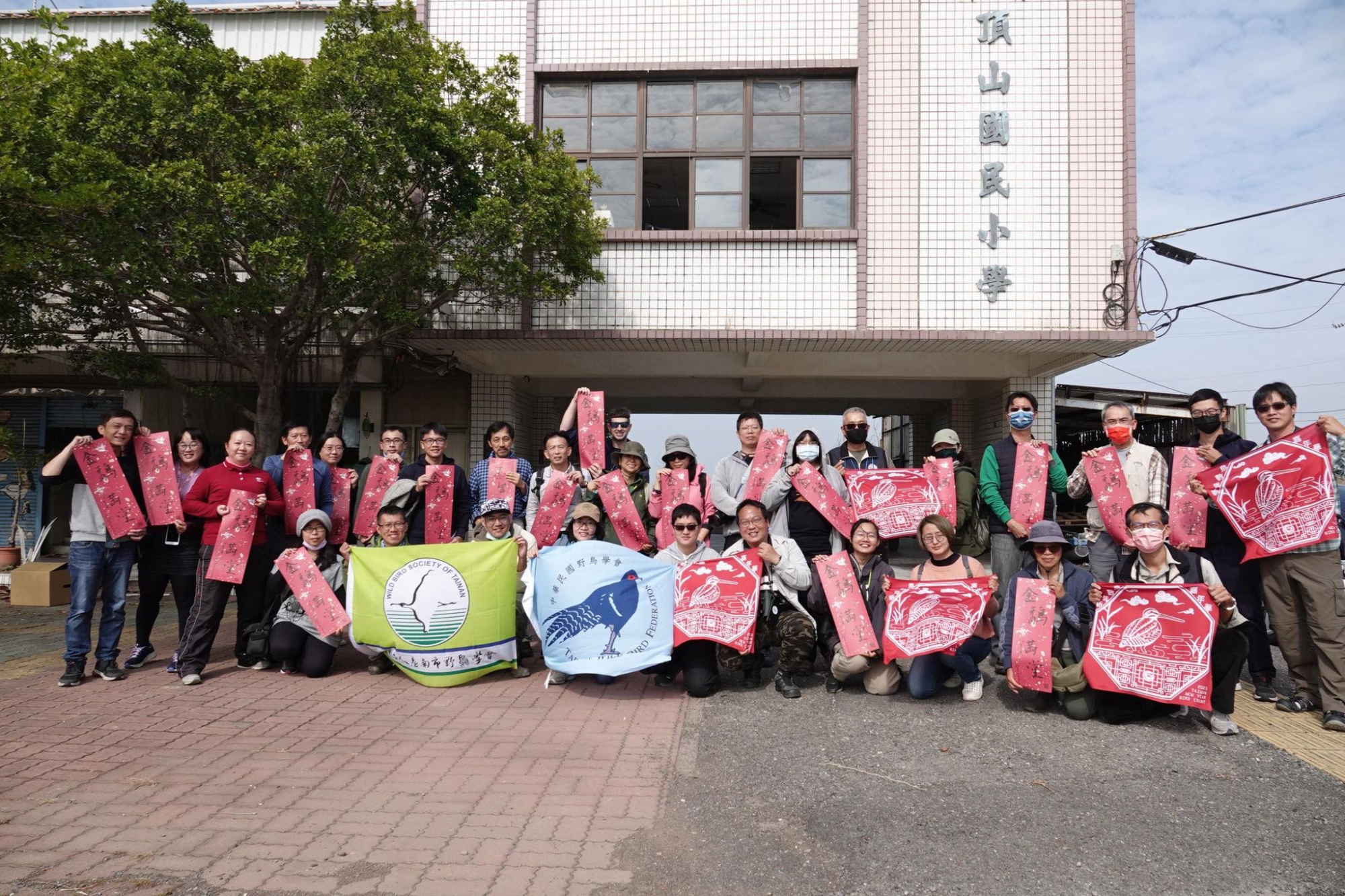
Representatives of the Chiku and Jiangjun Salt Pan Wetlands Restoration Alliance take part in the Taiwan NYBC (Source: TWBF Archives)
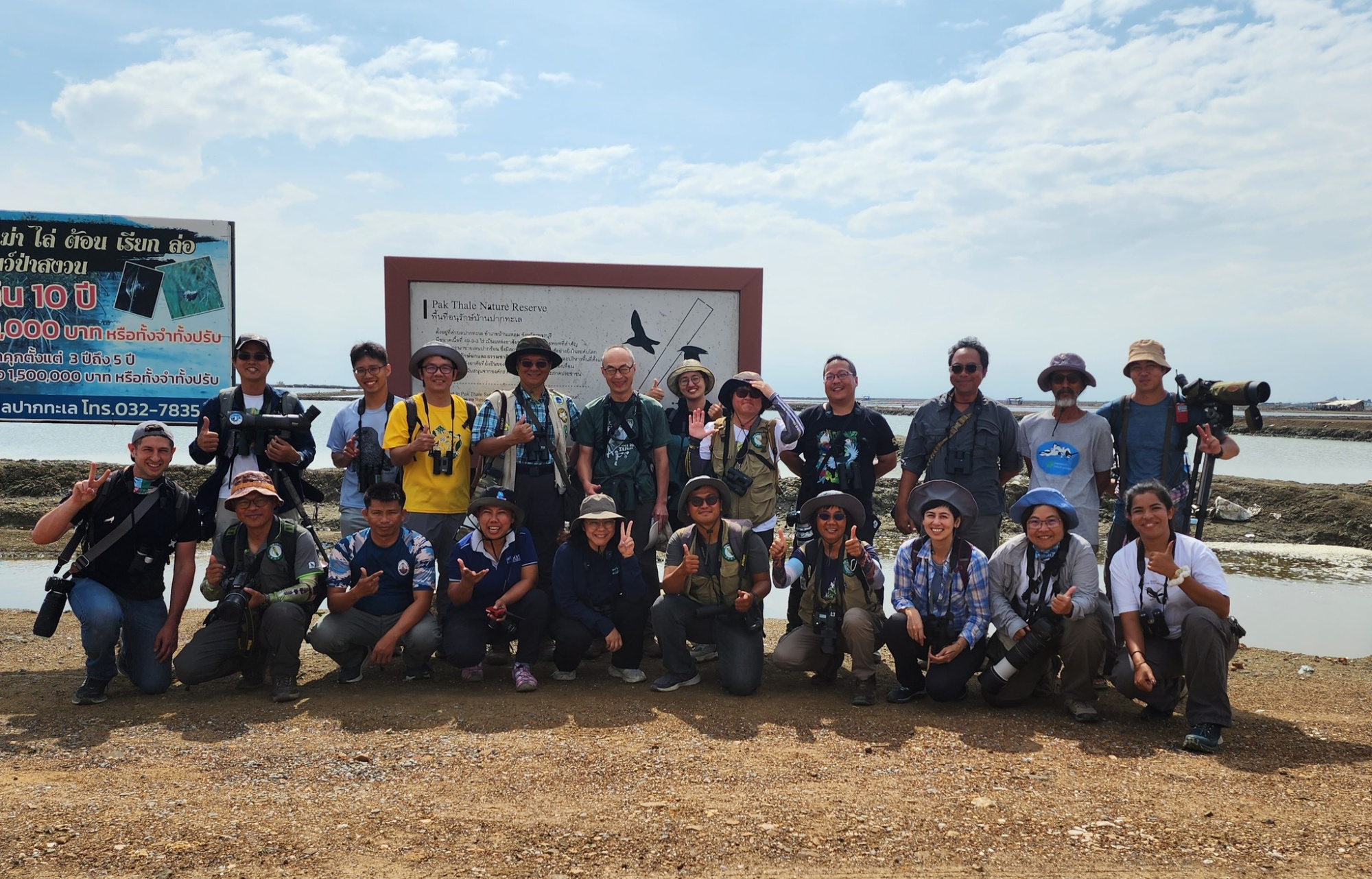
In November 2023, the Chiku and Jiangjun Salt Pan Wetlands Restoration Alliance visited Thailand for meetings exchanges with BCST on salt pan wetland conservation (Source: TWBF Archives)
Currently, the TWBF is working with partners and colleagues to help add to the global conversation about Taiwan's birds and their conservation. With many projects, particularly citizen science projects, now mature and long-term, analysis can be done to garner insights. In 2023, using data collected from the Taiwan Breeding Bird Survey, Taiwan became the second country in Asia to create indicators for forest birds and farmland birds. Data analyzed by TBRI indicated that most species were stable with only two showing declines. However, there were another six species which were heading towards threatened status (9). This information is important for informing decisions on policy and conservation.

Speakers at the March 2023 press conference on Taiwan becoming the second country in Asia to create national bird indicators for biodiversity (Source: TWBF Archives)
Another major project that began in 2023 was a revisiting of the creation of a Taiwan Bird Atlas. However, this one will be created through the help of eBird, which has been in talks with the eBird Taiwan team. Already, there is a lot of data coming in from eBirders all over Taiwan. For its part, the TWBF is conducting education and outreach, doing sessions on usage, troubleshooting and improving ID skills. A set of online tutorials have also been created and put on the TWBF's YouTube channel for those interested. The official website launch for the Taiwan Bird Atlas took place January 18, 2024.
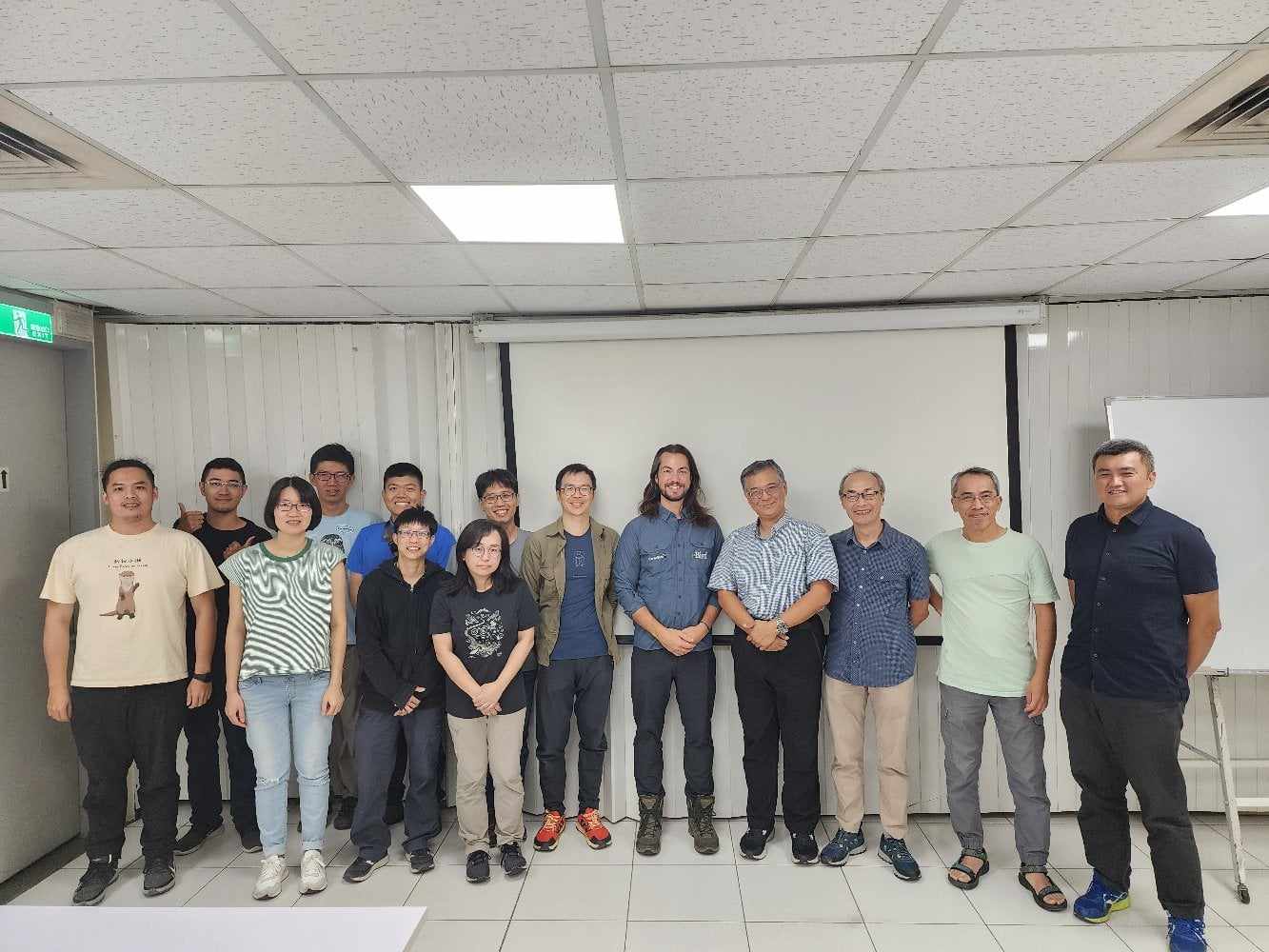
In November 2023 the TWBF and TBRI hosted Ian Davies from eBird. While here a technical workshop was held about the upcoming Taiwan Bird Atalas (Source: TWBf Archives)
The TWBF currently has a number of other projects that it is working with the TBRI to achieve. This includes updates to the Red List of the Birds in Taiwan and the second State of Taiwan's Birds Report. The federation is also working hard to help promote its partners and all the good work they do with the wider world. This includes talking with other international NGOs about salt pan conservation, citizen science, community conservation efforts and international collaborations to that effect. One such group has been the Czech Society for Ornithology.
It began in late 2020 when CSO Director Zdenek Vermousek wrote a contributing piece to the TWBF's Feather on how birds don't know borders and all hands are needed to counter the effects of species loss and climate change (32). This was followed up in the fall of 2021 with CSO's Dr. Petr Voříšek speaking at the Major Topics in International Bird Conservation Webinar Series. This online webinar series was created to celebrate the creation of Taiwan's first national bird report. Voříšek served as director and coordinator of the Pan-European Common Bird Monitoring Scheme and was heavily involved in the coordination of the 2nd European Breeding Bird Atlas (17).
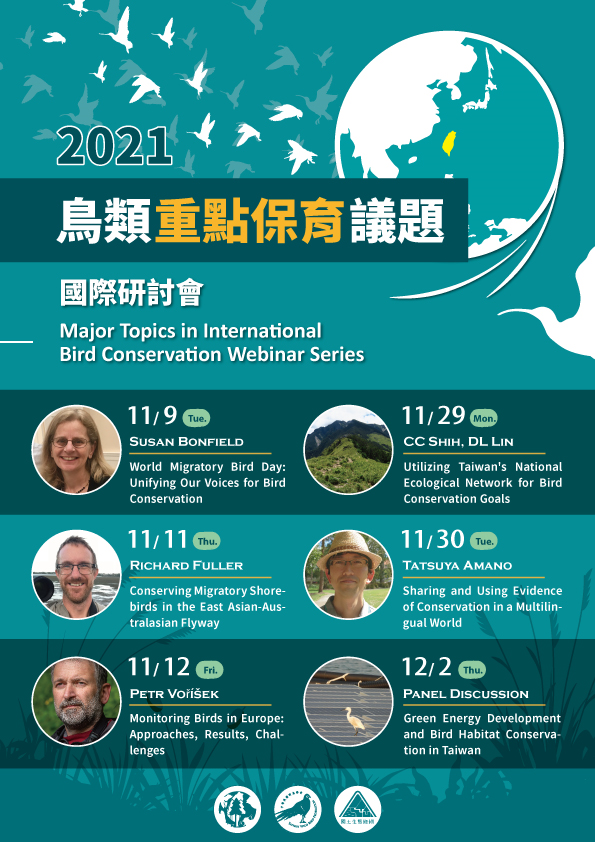
2021 Major Topics in International Bird Conservation Webinar Series (Source: TWBF Archives)
After this, in March of 2022, the CSO, the TWBF and its partners, and representatives from TBRI met virtually for the first time to discuss birds, conservation issues, and citizen science in Czechia and Taiwan. Presentations about avifauna, current environmental situations, and the use of citizen science were all discussed, helping the groups learn more about each other (18). Then in December 2022, Director Vermousek himself visited Taiwan. During that time, he met with representatives of the TWBF and TWBF partner the WBS Tainan, even participating in the Taiwan New Year Bird Count (19). In 2023, TWBF Director of International Affairs Scott Pursner continued the trend by visiting Czechia to do presentations and hold talks with the CSO on future collaborations.

Director Vermousek and his wife Jindra participate in the 2023 Taiwan New Year Bird Count, December 2022 (Source: TWBF Archives)
One Flock, One Future
Taiwan currently sees 686 species occur here, with 32 endemics and 52 endemic subspecies. The TWBF is proud to say that it has 21 partner organizations working on any number of topics from birdwatching to conservation plans. After 35 years, the federation stands with the same mandate as it did when first founded by the three major birdwatching groups of northern, central, and southern Taiwan – to serve as a unified voice for local groups when discussing with the government and to help find international opportunities and provide representation for them abroad. A non-governmental organization and bird society at its core, the TWBF has always been led by local people, who have and always will make up the heart of its efforts. For former TWBF president Dr. Lucia Liu Severinghaus, "TWBF is the name but everything else is the partners. And really that is appropriate. People work on local issues and TWBF should assist. We should try to find experts and outreach from other countries to help folks with the local issues. You just do what you think is best in order to be useful to the cause."
Another former TWBF president, Dr. Fang Woei-horng echoed this, "NGOs like ours are important because we can call people together. You always need someone who can do that part ."
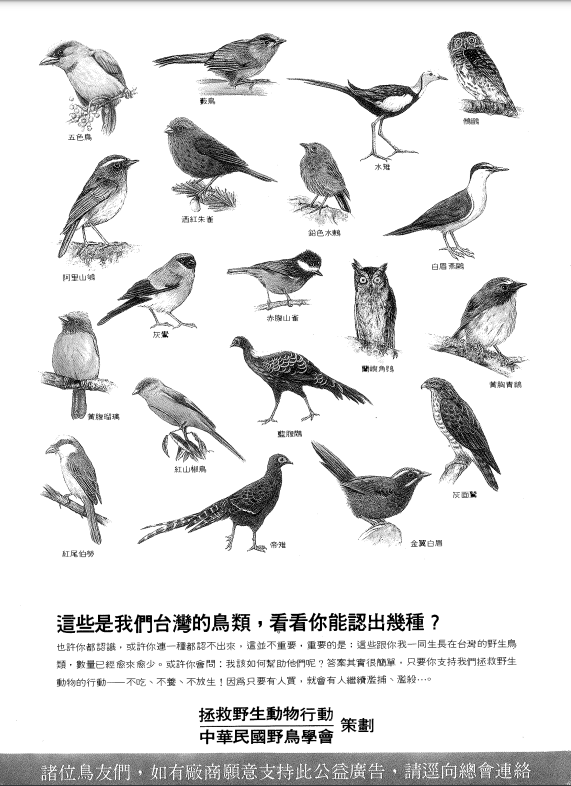
"These are our Taiwanese birds. How many can you recognize?" This 1990 Feather ad calls on people to care about Taiwan's birds and their conservation (Source: Feather 17 (3)1)
Current TWBF secretary-general Allen Lyu added, "Who are we? It's a good question. Really, we do not control much. For example, we organize the Taiwan Black-faced Spoonbill Census, The Checklist of the Birds of Taiwan, and do outreach on behalf of eBird Taiwan. There are many issues that focus on birds. The past was a time of firsts, but things must grow and change. IBAs, research forums, actions for species, the growth of citizen science… bird societies can't stay static and must evolve as a reflection of the society they exist in. Problems today are different from problems of the past, but there will always be problems. So we work to do things well and stably, and help our partners to the best of our ability."
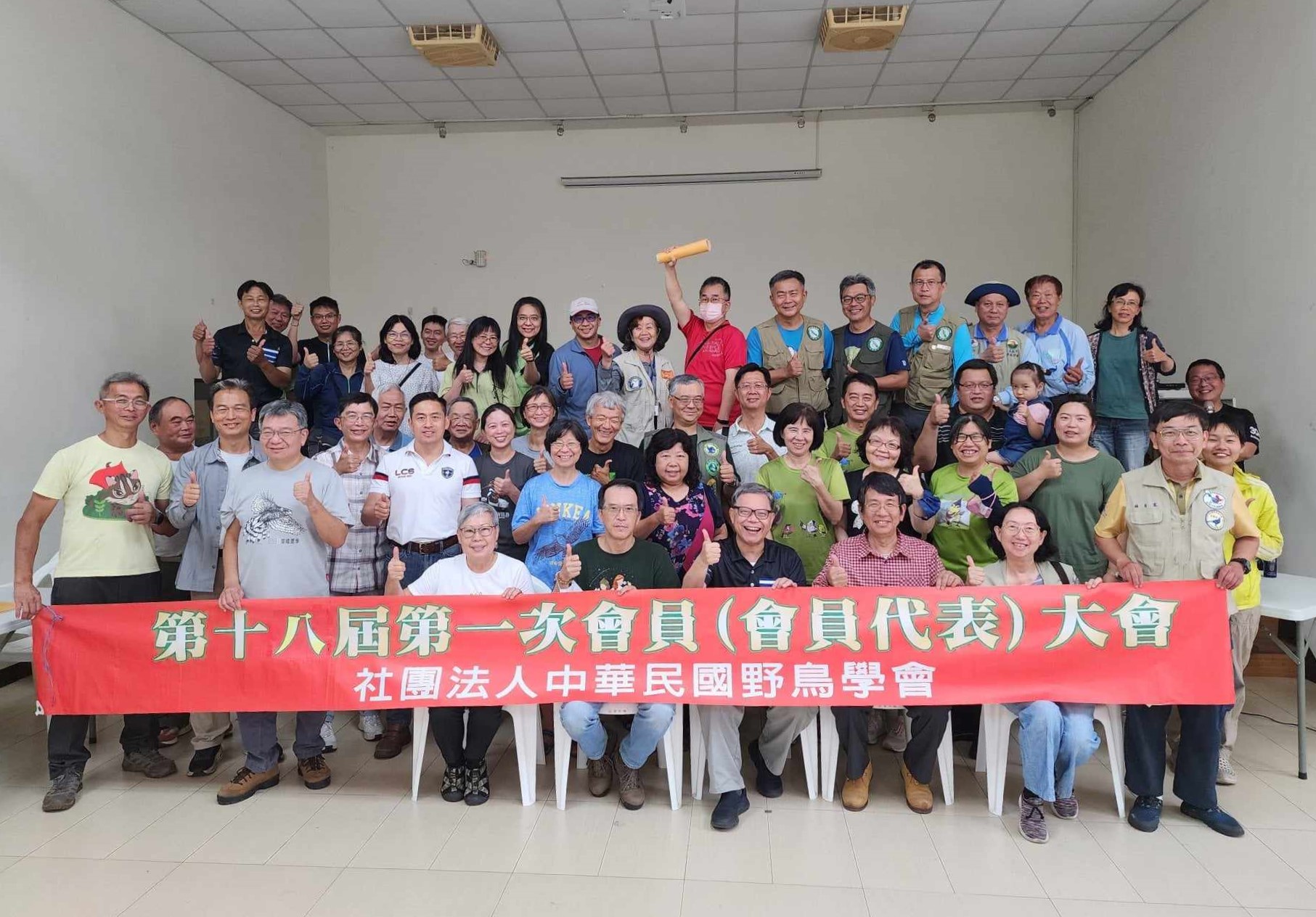
The TWBF General Assembly held in Tainan in May 2023 (Source: TWBF Archives)
He added, "The TWBF and our partners are important because we are the network. Nothing can get done by a single person or group, be it citizen science, working on issues related to green energy, or wetland adoption. NGOs can operate in a way that the government can't. Our members are the people on the ground, and after so many years, we know we must talk to each other and work together to make progress. Of course, our work isn't just us, we need more people and others on the same page as we are. We need to keep the friends we have and make new ones, locally and internationally. It's why we do our best to help our partner organizations as much as we can. Its also why the alliance we are a part of, the eBird trainings we hold with our partners, and the collaboration with government groups like TBRI are all important, as is doing more together with friends in places like Thailand, Czechia, and elsewhere. This is the reality. We are all just one flock, one future."
Part 1: A Historical Review of Ornithological Study and Birdwatching Groups in Taiwan
Part 2: The Founding of the TWBF and its Partners and Early Actions (Late 1980s-2000)
Part 3: Part 3: Growth and Change in the New Millenium (2001-2015)
References:
(1) Chiou, B. 2019. Notes from the 2019 Free Buzzard at mt. Bagua Event. Chinese Wild Bird Federation. 中華飛羽 292 (3): 8-9. (中文) Retrieved 8/23/2023
https://www.bird.org.tw/sites/default/files/field/file/download/Feather%20292_0.pdf
(2) Chiku and Jiangjun Salt Pan Wetlands Restoration Alliance. 2023. Critically Endangered Spoon-billed Sandpiper No. 88 Returns to Taiwan. Taiwan Wild Bird federation. Retrieved 8/23/2023
https://www.bird.org.tw/news/2872
(3) Chiku and Jiangjun Salt Pan Wetlands Restoration Alliance. 2023. Nearly 20,000 Migratory Birds Counted in Tainan's Chiku and Jiangjun Salt Pans. Taiwan Wild Bird Federation. Retrieved 8/14/2023
https://www.bird.org.tw/news/2650
(4) CWBF Secretariat. 2020. Statement on the Removal of Chinese Wild Bird Federation by BirdLife International. Chinese Wild Bird Federation. 中華飛羽 298 (9): 7. Retrieved 8/23/2023 https://www.bird.org.tw/sites/default/files/field/file/download/%E4%B8%AD%E8%8F%AF%E9%A3%9B%E7%BE%BD298%E6%9C%9F1091111-final.pdf
(5) eBird. February 2024. Taiwan. eBird. Retrieved 02/01/2024
https://ebird.org/region/TW?yr=all
(6) Home Run Taiwan. 9/6/2021. My Wild Family [Video] YouTube.
https://www.youtube.com/watch?v=HxFxhvxMp0Q
(7) Joint Statement. 2020. Call for the Withdrawal of Tainan's Jiangjun Photovoltaic Project: Ecological Hotspots Should Not Be Developed for Green Energy. TWBF Website. Retrieved 8/23/2023
https://www.bird.org.tw/news/605
(8) Joint Statement. 2020. Develop Green Energy in Appropriate Places, NGOs and Scholars Welcome the National Property Administration's Decision to Withdraw Plans to Develop Areas of High Ecological Sensitivity. TWBF Website. Retrieved 8/23/2023
https://www.bird.org.tw/news/611
(9) Lin, D. L., Ko, J. C. J., Amano, T., Hsu, C. T., Fuller, R. A., Maron, M., ... & Lee, P. F. 2023. Taiwan's Breeding Bird Survey reveals very few declining species. Ecological Indicators, 146, 109839.
https://www.sciencedirect.com/science/article/pii/S1470160X22013127
(10) Lin, R.-S., Y.-J. Lu, C.-H. Yang, T.-J. Tseng, C.-J. Ko, and W.-J. Chen. 2016. The Red List of Birds of Taiwan, 2016. Endemic Species Research Institute and Forestry Bureau, Council of Agriculture, Executive Yuan, Nantou, Taiwan Retrieved 8/11/2023
https://www.researchgate.net/publication/312045198_The_Red_List_of_Birds_of_Taiwan_2016
(11) Lyu, A. 2018. A New Milestone in Taiwan's Bird Database - The Combination of the Bird Records Database of the Chinese Wild Bird federation and the eBird Database. Chinese Wild Bird Federation. 中華飛羽 285 (1): 19. (中文) Retrieved 8/21/2023
https://www.bird.org.tw/sites/default/files/field/file/download/Feather285%28%20NEW%20%29final.pdf
(12) Lyu, A. 2018. The Bird Taiwan Forum and Taiwan Migratory Bird Seminar. Chinese Wild Bird Federation. 中華飛羽 289 (6): 9-10 (中文). Retrieved 8/23/2023
https://www.bird.org.tw/sites/default/files/field/file/download/Feather289.pdf
(13) Pheasant-tailed Jacana Conservation Park, Wild Bird Society of Tainan, Taiwan Wild Bird Federation. 2021. Taiwan Wild Bird Federation Becomes Member of International Partnership for the Satoyama Initiative. Taiwan Wild Bird Federation. 中華飛羽 302 (9): 8-9. Retrieved 8/23/2023
https://www.bird.org.tw/news/1495
(14) Pursner, S. 2019. In Search of a Better Bird Scaring Line. Chinese Wild Bird Federation. 中華飛羽 292 (3): 17. Retrieved 8/23/2023 https://www.bird.org.tw/sites/default/files/field/file/download/Feather%20292_0.pdf
(15) Pursner, S. 2020. Discussion Sessions from the 1st Asian BirdLife Festival and Nature Expo in Thailand. Chinese Wild Bird Federation.中華飛羽 297 (6): 8-9. Retrieved 8/23/2023
https://www.bird.org.tw/publish/437
(16) Pursner, S. 2021. Let's Get Hei-Pi: A Review of Black-faced Spoonbill Conservation Efforts in Taiwan - Part 2. Taiwan Wild Bird Federation. Retrieved 8/1/2023
https://www.bird.org.tw/publish/1202
(17) Pursner, S. 2021. TWBF’s First Webinar Series Highlights Major Topics in International Bird Conservation.中華飛羽 303 (12): 10-12. Retrieved 8/14/2023 https://www.bird.org.tw/sites/default/files/field/file/download/%E4%B8%AD%E8%8F%AF%E9%A3%9B%E7%BE%BD303%E6%9C%9F%20%E5%AE%8C%E7%A8%BF_0.pdf
(18) Pursner, S. 2022. Webinar Brings Taiwanese and Czech Bird Research Communities Closer Together. 中華飛羽 304 (3): 12-13. Retrieved 8/14/2023 https://www.bird.org.tw/sites/default/files/field/file/download/%E4%B8%AD%E8%8F%AF%E9%A3%9B%E7%BE%BD304%E6%9C%9F.pdf
(19) Pursner, S. 2023. Czech Society for Ornithology Director Visits Taiwan. 中華飛羽 308 (2023)3: 18-19. Retrieved. 9/27/2023
https://www.bird.org.tw/sites/default/files/field/file/download/%E4%B8%AD%E8%8F%AF%E9%A3%9B%E7%BE%BD308%E6%9C%9F%20%E5%AE%8C%E7%A8%BF.pdf
(20) Pursner, S., Lin KH. 2022, June. CONSERVATION UPDATE Bringing water fairies back to southern Taiwan. BirdingASIA 37(1) 89-94. Retrieved on 8/11/2023
https://www.bird.org.tw/publish/2039
(21) Royal Society for the Protection of Birds. 2022 Summer. Collaborating on Bycatch. Impact magazine Retrieved 8/23/2023 https://www.rspb.org.uk/globalassets/images/join--donate/e-impact/summer-2022/impact_summer_2022.pdf
(22) Taiwan Fisheries Agency. 2022. The Fisheries Agency Worked Collaboration on Seabird Bycatch Mitigation with Domestic and Foreign Bird Conservation Societies. Taiwan Fisheries Agency. Retrieved 8/23/2023
https://en.fa.gov.tw/view.php?theme=Press_Release&subtheme=&id=64
(23) Taiwan Today. 9/7/2015. 2015 Presidential Award Winners Named. Ministry of Foreign Affairs. Retrieved 8/21/2023 https://taiwantoday.tw/news.php?unit=10&post=21631
(24) TWBF Secretariat. 2020. Statement on Taiwan Wild Bird Federation Name Change and Clarifications on Removal from BirdLife International. Taiwan Wild Bird Federation. 中華飛羽 298 (9): 9. Retrieved 8/23/2023
https://www.bird.org.tw/sites/default/files/field/file/download/%E4%B8%AD%E8%8F%AF%E9%A3%9B%E7%BE%BD298%E6%9C%9F1091111-final.pdf
(25) TWBF Staff. 2018. Reflections on a Summit for Flyways. Taiwan Wild Bird Federation. Retrieved 8/23/2023
https://www.bird.org.tw/publish/360
(26) TWBF Staff. 2019. Environmental Education and Asian Partnership on Display at EEO Workshop. Taiwan Wild Bird Federation. Retrieved 8/23/2023
https://www.bird.org.tw/publish/177
(27) TWBF Staff. 2023. Press Release: Meinong Lake Jacana Conservation Area Case Study Accepted by the International Partnership for the Satoyama Initiative. Taiwan Wild Bird Federation Website. Retrieved. 11/15/2023
https://www.bird.org.tw/news/3753?fbclid=IwAR1DghPrvRPXyVxy4IASqng6lJWn5...
(28) Taiwan Wild Bird Federation. 2023. Number of Black-faced Spoonbills in Taiwan Exceeds 4,000 for first time in Census. Retrieved 8/14/2023
https://www.bird.org.tw/news/2951
(29) Taiwan Wild Bird Federation, Wild Bird Society of Tainan, Black-faced Spoonbill Conservation Association, Kaohsiung Wild Bird Society. 2020. [Joint Statement] Nationalized Salt Pans are Not Degraded Habitats; The Conservation Movement Should Not Be Moving Backwards. Retrieved 8/28/2023
https://www.bird.org.tw/news/1335
(30) 2020 State of Taiwan's Birds Report. 2020.
https://www.bird.org.tw/report/2020/english
(31) Ueng, Yih-tsong, Yang, Ying-chin, Chen Kun-neng. 2011. 2011 Taiwan’s Wetlands of Importance. Urban And Rural Development Branch, Construction and Planning Agency, Ministry of the Interior.
https://wetland-tw.tcd.gov.tw/en/GuideMap.php
(32) Vermousek, Z. 2020. Birds Do Not Know Borders. 中華飛羽 298 (9): 34. Retrieved 8/11/2023 https://www.bird.org.tw/sites/default/files/field/file/download/%E4%B8%AD%E8%8F%AF%E9%A3%9B%E7%BE%BD298%E6%9C%9F1091111-final.pdf
(33) Zhang, YL. 12/3/2023. 90% of Wintering Pheasant-tailed Jacanas Found in Guantian for Two Reasons While Others Areas Show No Trace. China Times. (中文) Retrieved 12/11/2023.
https://www.chinatimes.com/realtimenews/20231203003195-260405?chdtv
